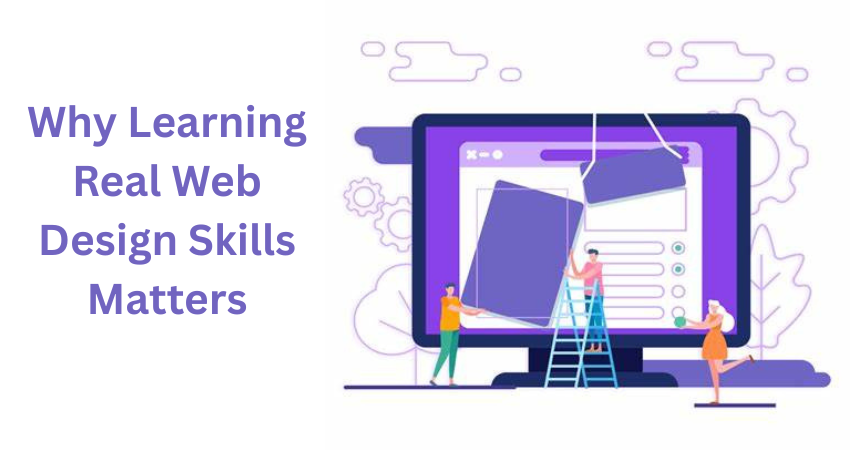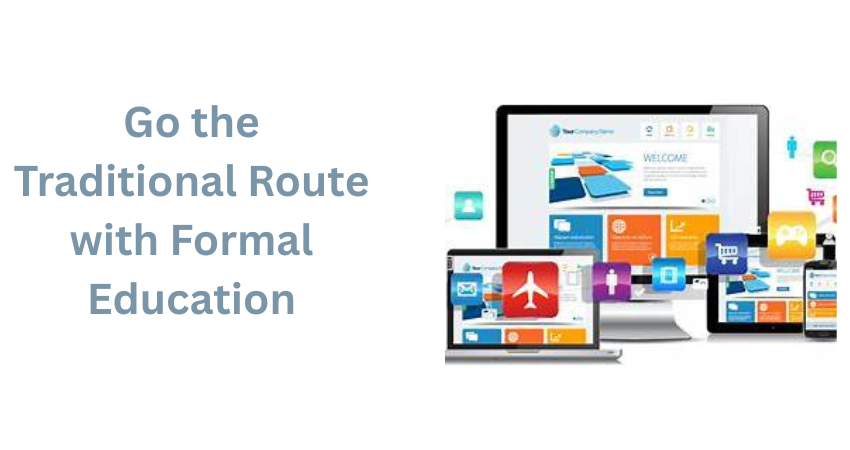Now it’s easier than ever to learn real web design because resources available both online and offline have become more and more diversified according to learning styles. Whether a total web novice or someone wanting to hone existing skills, sites like free Code Camp, Coursera, and YouTube will provide you with real-world examples, hands-on tutorials, and project-based learning to teach you everything from design principles to responsive layouts. For those who prefer a more formal and interpersonal environment, coding boot camps and design schools afford full immersive courses that mimic actual work situation. Online communities and forums bring together learners with people who already work as designers, creating an environment where they share tips, feedback, and resources that become pretty lively for learning. Basically, start building: Don’t forget to design some websites, try your hand at Figma or Web flow, and continue to refine it over and over with practice and feedback.
Why Learning Real Web Design Skills Matters

The craft of web designing has become more than making things pretty. It only matters if design designates user involvement, unhindered from all distractions, while, at the same time, it meets the objectives of the brand and the contemporary requirements for accessibility, speed, and mobile responsiveness. Real web design is not about font choice or selecting complementary colors; rather, it understands the real effect that design has on functionality and user behavior.
In the competitive digital world of today, businesses of all kinds need websites that are actively eye-catching but will also keep the light shining on their conversion rate. And this is why web design-the-theory-and-practical really comes in handy these days for everybody. Whether you want to freelance, find a job in an agency, or work on your own digital product, having a good design foundation instantly opens up limitless opportunities. Well, this brings us to the big question: where can one actually learn web design with a solid, lifelong impact? There are many possibilities. Where do you actually choose to learn web design?
Learn Web Design through Online Platforms
Explore Structured Courses on Reputable Learning Sites
Working structured courses online, one can pick up web design very easily. Websites like Coursera, udemy, and Skill share cover courses from beginner level to advanced regarding HTML, CSS, UX/UI principles, and even tools of design like Figma and Adobe XD. The advantages of these platforms actually lie in the progressive learning paths, practical assignments, and sometimes a certificate on completion.
Most of these instructors take active contracts in the industry, so they are teaching you skills relevant to the present job market-for employers and clients alike. Courses typically include quizzes, downloadable resources, and interactive communities where you can raise questions and obtain feedback. This approach is perfect for learners who appreciate clear instruction and set timelines.
Take Advantage of Free Resources and Communities
If you’re on a shoestring like me or searching to see if web designing is your thing, then you have tons of good-quality free resources. FreeCodeCamp, The Odin Project, or W3Schools are all excellent open-source learning paths that take you from nothing to working and all levels in between. They offer everything from tutorials to exercises to complete projects for your portfolio.
Another great thing is that most of these free platforms have equally passionate communities behind them. Reddit, Discord channels, or online forums enable you to connect with fellow students, get feedback on your work, and learn of tools or trends that you may otherwise have missed. It may take a bit more discipline to go this route, but it is one tried-and-true way to get solid web design skills almost free.
Learn by Doing through Real Projects
Start Your Own Projects or Redesign Existing Sites
Concerning theory, one may say theory means much; however, nothing beats the practical example. To get a real understanding of web designing, one must put to practice what he/she has learned. This may involve anything from redesigning your portfolio, supporting a friend with a website for a small business, or redoing a basic site. Practicing is a good way to retain the knowledge gained.
Starting with smaller projects helps build up momentum and self-confidence. Try creating some small landing pages or multi-page sites, or set up a personal blog. These can be set out as wireframes in Figma and then brought to life using HTML and CSS. You will learn layout, responsive design, and how to troubleshoot everything that goes wrong by experience, just like in the real world.
Participate in Open Source or Volunteer for Nonprofits
Getting involved with open-source projects and volunteering for nonprofits is yet another excellent means to gain real-life experience. GitHub is a good place to go if you want to find active repositories looking for contributors in order to work with veteran developers and hone your design and coding skills.
Many nonprofits and little organizations cannot afford to hire professional designers but would accept help from a willing learner. It is a win-win situation whereby you gain practical and portfolio-ready experience while they attain a better digital presence. Besides, putting one’s skills to help a cause can be deeply satisfying.
Go the Traditional Route with Formal Education

Enroll in University or Community College Programs
In case you love a more formal and holistic curriculum along with mentors and fellow students, then education would be the way. Most universities and community colleges offer courses for associates or bachelor’s degree programs in web design, digital media, or interactive design. The curriculum of such programs tends to merge design and development, thereby giving you a full-stack view of the web.
The benefits of taking the classic route include great personal interaction with instructors, collaboration with peers, and access to career counseling services. However, this route could turn out to be more expensive and time-consuming. This is an excellent option if you want credentials or prefer learning in an academic environment, especially in relation to long-term thinking about career options in tech or design.
Attend Boot camps for a More Intense Learning Experience
Boot camps for web design are yet another deliberately organized fast learning pathway. An intensive boot camp ranges from a short period of time and usually infused with skills pertinent to landing jobs. Typically of 8 to 16 weeks duration, boot camps like General Assembly, Career Foundry, or Iron hack involve hands-on projects, mentorship, and career assistance.
Though, they’re generally quite expensive, a good number of boot camps will have job guarantees or assistance into jobs afterward. If one is really into getting much faster into the career and experiential learning, this might just be the perfect investment. Most of the boot camps usually imitate a real-world project and help you develop a portfolio that you will need while applying for your very first job or freelance gig.
Learn from Mentors and Industry Experts
Find a Mentor or Join Design Communities
The vastness of the field can be overwhelming, particularly when one is learning alone. A good mentor—someone experienced at mentoring—will ramp up your learning through guidance, feedback, and encouragement. The mentor will be instrumental in decisions about your career, identification of blind spots, and insightful tips on how to deal with issues in real life.
Find mentors through networking on LinkedIn or Twitter, or directly approach creators you admire. If you ask graciously and earnestly, many pros welcome mentoring beginners. The real-world design communities are also rich in opportunities to connect, ask questions, and grow together—examples include Designer Hangout, Dribble, and Behance.
Attend Web Design Meetups, Webinars, and Conferences
I am trained on data until October 2023. Making use of offline and online events, you get a great opportunity to meet top designers with new tools and techniques that can inspire you. Most major cities have created meet-ups for web designers to present case studies, review tools, and even do live critique sessions. These types of sessions are more hands-on and entertaining than trying to stay current through the usual relationship buildups.
If you are not able to attend any of these events, virtual conferences and webinars usually come free. Popular sources are from Smashing Magazine, Adobe, and others, which cover practically everything from UI/UX design, accessibility to the latest trends. The most important thing would be to continue showing up, participating, and learning from those embarking on what you hope to achieve.
Conclusion
By 2025, learning real web design is becoming increasingly easy, owing to the huge number of online platforms, community support, and practical opportunities. If you select self-paced study, project-based experience, a boot camp, or a formal program, remain consistent and curious. Real growth h starts when one begins to build, has feedback assimilated, and keeps informing about current trends.